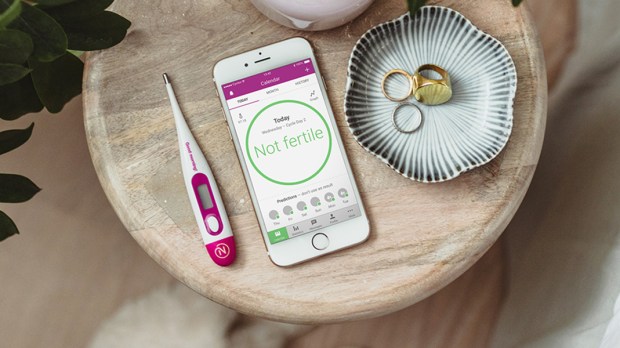The FDA made headlines recently by approving a mobile app called Natural Cycles to be marketed as a contraceptive.
This is the first time that the agency, which regulates the marketing of pharmaceutical and medical devices in the United States, has allowed an app to market itself this way. Prior to the FDA’s announcement, Natural Cycles had been marketed and used as a contraceptive device in the EU, and according to its website, it has 900,000 users worldwide. But the app has received flak from users and healthcare workers in both Sweden and the UK for the unwanted pregnancies that have resulted from either user- or method-failures of the app.
As a Natural Family Planning (NFP) instructor, I think it’s great that the FDA has finally begun approving of more “natural” forms of family planning methods, and promoting family planning options beyond the Pill, IUD, condom, etc. But if you’re considering joining the nearly 1 million women already using Natural Cycles as an alternative to the Pill or the IUD (or some other form of “artificial” contraception), you should approach the app with a certain level of caution. The following are three things you should know before downloading the app and shelling out for its $80/year subscription.
1. The app is based on an algorithm which uses a “plug and chug” approach to fertility awareness
In order for the Natural Cycles app to work, women must input their daily fertility data into the app (primarily, their basal body temperature), which then prompts women to either abstain or “use protection” on days of fertility — if she’s looking to postpone pregnancy. Sound familiar? That’s because the algorithm was designed using the same science-backed information behind fertility-awareness methods (FABMs) and Natural Family Planning (NFP) methods, which use a woman’s daily signs of fertility (among which are cervical mucus, basal body temperature, cervical positioning, etc.) to determine where a woman is in her cycle — and therefore her likelihood of getting pregnant if she and her husband engage in relations on that day.
While in clinical trials the app has a demonstrated “typical” use efficacy of 93percent and a “perfect” use efficacy of 99 percent, some women have complained of unwanted pregnancies occurring while they used the app. It seems that part of the problem has to do with women using the app while actually having very little understanding of why and how it works — much like how few women understand the way the Pill or the IUD works. Which leads us to the next point…
2. The app is no substitute for actually learning how — and why — your cycle works
While the app is based on the same fertility information that women are taught to recognize and record in a FABM or NFP method, the “plug and chug” method employed by the app and its algorithm is arguably much less empowering than truly understanding how one’s cycle works.
When you learn an FABM or NFP, you’re taught all of the background science needed to understand why the method works. In doing so, you’re given a deeper level of insight into the way your body works that simply can’t be replicated by plugging numbers into your phone. It’s no wonder some FABMs and NFP methods have higher typical-use rates of efficacy than Natural Cycles; no algorithm will ever be able to account for the variances in every individual woman’s body and cycle, which is why learning how to apply a method to your own particular body and fertility is so vital to understanding (and interpreting) your cycle.
3. Referring to NFP and FABMs as “contraceptives” is a dangerous misnomer
While it’s fantastic that NFP and FABMs are finally being recognized as science-based, legitimate, and effective methods of helping couples plan (and achieve) pregnancy, viewing NFP/FABMs (or an app that uses their methodology) as contraceptives just isn’t right.
FABMs/NFP are a so much more than a contraceptive — they’re a lifestyle choice. Not only that, they are used to achieve pregnancy as well as gain a greater ongoing knowledge of a woman’s reproductive health. Therefore, it’s much better to view and use them as way of life — and, specifically, as a way of life that recognizes and respects the body’s natural rhythms, and takes ownership over the knowledgeable choices made while using those methods.
Because Natural Cycles is being marketed as a “contraceptive,” it’s no wonder that people using them end up unintentionally pregnant and frequently choose an abortion to end the pregnancy — which is unsurprising, considering there’s evidence to suggest that increased use of contraceptives is correlated with the increased rate of abortions.
Contraceptives are used with the mentality of relying on something to prevent a pregnancy from occuring — with little regard for a couples’ fertility and/or chance of getting pregnant. FABMs and NFP methods, on the other hand, use the awareness of a couple’s combined fertility to encourage them to make responsible, knowledgeable decisions when it comes to engaging in sex and planning their family.
So while Natural Cycles is a science-backed way of preventing (or achieving) pregnancy, and while it certainly does have the potential to help couples plan their families “naturally,” it will never be an adequate substitute for choosing to learn NFP or an FABM.

Read more:
9 Reasons Catholics oppose contraception

